Leaving Eilat this morning, we headed north through the very same wilderness where Moses and the Hebrew nation wandered for forty years. But it didn’t take us that long to enter the Promised Land.
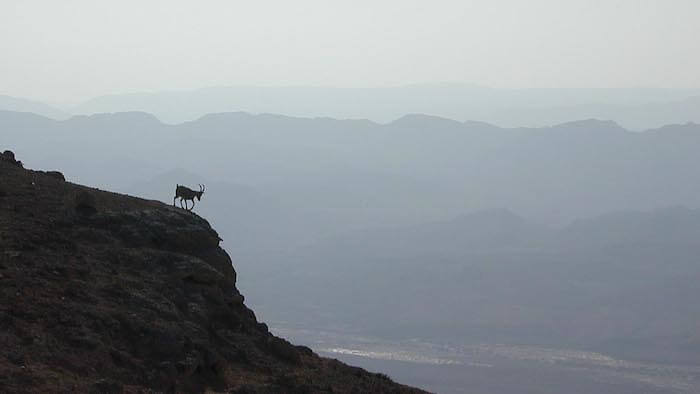
(Photo: Ibex on cliff edge at Machtesh Ramon. Courtesy of the Pictorial Library of Bible Lands)
From the “Grand Canyon of Israel” to the valley where David killed Goliath, our bus stopped a number of times over a hundred miles.
On our journey north, we saw a part of Israel very few pilgrims ever see.
The Makhtesh Ramon— Israel’s “Super Bowl”
We traveled north through the wilderness of Zin. This is the area where Israel grumbled against Moses. We were careful not to complain!
We arrived at the largest national park in Israel.
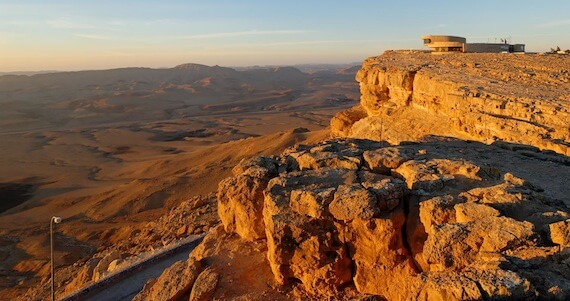
(Photo: Mizpe Ramon observatory. Courtesy of the Pictorial Library of Bible Lands)
The most beautiful parts of the Negev Highlands are the makhteshim—a term Israel contributed to geology. These types of craters exist only in Israel. A makhteshim occurs when erosion from a single waterway creates a valley with sheer cliffs, or anticlines, that enclose the crater on all sides—creating a bowl.
In fact, the term makhtesh means, “mortar,” like a “bowl.” For that reason, some call the Makhtesh Ramon the “Super Bowl” of Israel. I have to agree.
Although we didn’t stop, we passed Sede Boker, the home of Israel’s first prime minister, David Ben Gurion. (The airport in Tel Aviv is named after him.)
Beersheba—Home of Abraham
After a LONG drive north, we pulled into Tel Beersheba.
Beersheba served as the last stop on the road called “The Way of the Patriarchs.” In fact, Israel’s practical borders were “from Dan to Beersheba.” This ancient highway stretched along the watershed of the Hill Country and received its name from the patriarchs who traveled north and south along it.
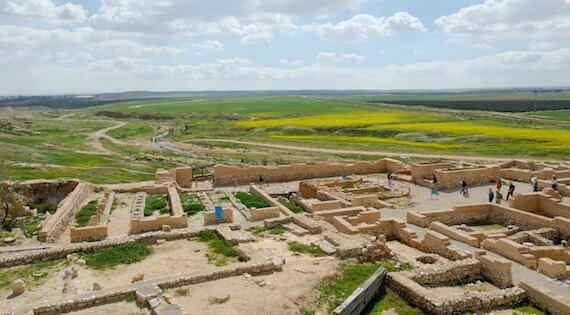
(Photo: Tel Beersheba. Courtesy of the Pictorial Library of Bible Lands)
Meandering through the ruins, we observed remains from a typical Israelite four-room house, a pillared building used as stables, and a set of large, circular stairs leading underground to a major water system. A painted black line runs horizontally across many of the ruins, separating the original walls below the line from the reconstructions built on top of it.
A Place where the Assyrians Slaughtered Hebrews
Our bus pulled to a stop at Tel Lachish (pronounced “la-keesh”).
After the Assyrian tyrant, Sennacherib, invaded Judah in 701 BC, he set his sights on Lachish. Sennacherib was so proud of his victory over Lachish that he commemorated the battle with a series of stone reliefs carved on the walls of his Nineveh palace. Portions of these reliefs are displayed today in the British Museum.
Here’s an example:
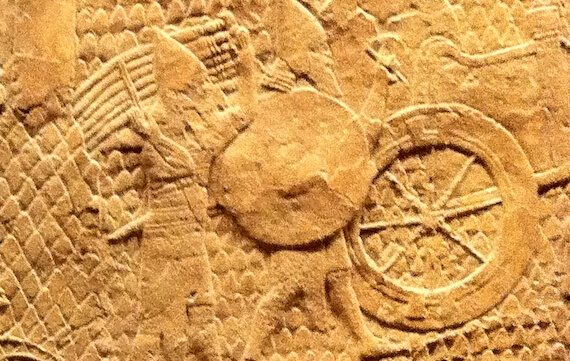
(Photo: Relief from Sennacherib’s Victory Over Lachish, in British Museum)
More than a century later, during the ministry of Jeremiah, Nebuchadnezzar of Babylon invaded Judah and laid siege to its most important cites—including again, Lachish.
Jeremiah records that near the end of the invasion, only:
Jerusalem . . . Lachish and Azekah . . . remained as fortified cities among the cities of Judah. —Jeremiah 34:7
The archaeological discovery called the “Lachish Letters” support Jeremiah’s verse.
Where David Killed Goliath
We’ve been at a lot of places where battles occurred today! Our final stop before Tel Aviv is a place where Israel won the battle. It all started from the courage of a teenager.
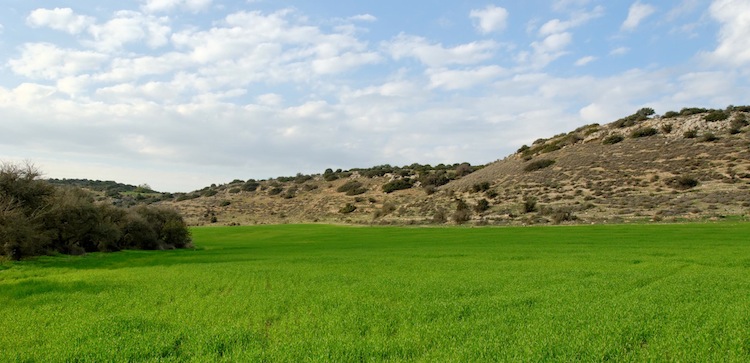
(Photo: Elah Valley, the area where David fought Goliath. Courtesy of the Pictorial Library of Bible Lands)
David killed Goliath in the Elah Valley, but he never intended to become a national hero that day. He simply did what God called him to do.
That’s a great lesson for us as well.
Tonight the “Pre-Tour Extension” ends and we meet the rest of the tour in Tel Aviv.
Continue Your Tour!
Learn more about each of these sites we saw, including devotionals for each one, by exploring these links:
- The Wilderness of Zin— Inspiring Awe but Not Obedience to God
- Beersheba—The Last Stop and a Point of Beginning
- Lachish—Blending the Bible, History, & Archaeology
- Are You Guarding Your Shephelah?
- The Valley of Elah—How Your Ordinary Becomes Extraordinary
See My Pictures from the Tour—and on the Map!
Check out my pictures of our tour. I’m adding to the collection daily, so be sure and check each day’s post. Click the locations on the map below to see pictures from that site.
(Can’t see pics in email or RSS? Just click here and select a post.)
